Golfer's Elbow is a relatively common affliction, not only in athletes. The name golfer's elbow is a colloquial name for inflammation of the medial epicondyle of the humerus. It is a pain syndrome of soft tissues lateral to the elbow joint. The degeneration occurs due to strain on the tendon attachments, where the tendons attach to the bone.
Repetitive activities, manual labor, or heavy lifting most often cause it. The characteristic symptom is pain on the medial side of the elbow. Muscles have their attachment in this area. They are innervated by the ulnar nerve, which in this dysfunction can also become compressed, provoking symptoms of nerve conduction disorder and causing inflammation of the medial epicondyle of the humerus.
As with many injuries, physically active people are particularly vulnerable to this one. Golfer's elbow affects people who practice such sports requiring fast hand movements. It includes weightlifting and sports like golf, from which the condition gets its name. Insufficient warm-up before training can contribute to developing a golfer's elbow. However, this injury can occur in different situations not related to sports. Golfer's elbow can occur after intensive gardening, cleaning, or even in office workers who spend much time at the computer.

The general cause of the injury is repeated bending and straightening of the elbow, which means that the muscle is overloaded![]() for a long time and causes micro-injuries to the tissue
for a long time and causes micro-injuries to the tissue![]() . Therefore, most often, damage to the attachments of the powers mentioned above occurs due to micro-injuries that accompany overload syndrome. It develops as a consequence of doing repetitive wrist movements against resistance.
. Therefore, most often, damage to the attachments of the powers mentioned above occurs due to micro-injuries that accompany overload syndrome. It develops as a consequence of doing repetitive wrist movements against resistance.
Different possible causes, although less common, are:
Fibrosis – Fibrosis occurs when the regenerative process produces an excess of connective tissue, leading to thickening and stiffness in the surrounding tissues. This can result in a decreased gas exchange surface in the lungs and cause ventilation problems. Fibrosis is commonly caused by inflammation and trauma.
Calcifications – Calcifications are changes in bone tissue that involve the deposition of calcium salts. They can either be benign or malignant and often lead to pain and increased vulnerability to injury. Fortunately, quickly diagnosed calcification of the bone allows the inclusion of appropriate treatment and stops the tissue's degeneration process.
Past fractures – The most common place are marginal fractures, which occur due to a fall on an upper limb straightened at the elbow joint. Symptoms of all fractures in the elbow joint are similar – redness, pain when trying to move the upper limb at the elbow, bruising, and restriction of mobility in the elbow joint.
Skin growths – Skin growths can be present from birth or develop over time. While most of them are harmless, it is important to monitor any changes that could indicate the presence of cancerous cells. There are various types of skin growths, including both benign and cancerous ones.
Cancers – The bone tumors that occur most often are metastatic lesions. Primary tumors are rare. Symptoms accompanying bone cancer can be confused with rheumatism. The exact origin of primary lesions has not been determined. Bone cancer is an insidious disease that can go without symptoms for a long term. Typical for it is bone pain that worsens over time and occurs at night.

The primary symptom of a golfer's elbow is severe pain in the elbow area. More unusual symptoms may appear with a more developed stage of the golfer's elbow. The leading causes of these symptoms are overload lesions and damage to the attachments of the obturator recumbens muscle or radial flexor of the wrist. The symptoms of a golfer's elbow can, therefore, include the following:
Pain in the elbow area – The primary symptom of a golfer's elbow is severe pain on the inner medial side of the elbow joint![]() , sometimes radiating to the forearm, wrist, and even the little and ring fingers. The soreness occurs when grasping and carrying things, throwing a ball, opening a door with a knob, or shaking hands. Initially, the pain is slight, not associated with other limitations of mobility or strength, and only increases when moving. With time, it also appears at rest. There may also be pain in the elbow bone on touch.
, sometimes radiating to the forearm, wrist, and even the little and ring fingers. The soreness occurs when grasping and carrying things, throwing a ball, opening a door with a knob, or shaking hands. Initially, the pain is slight, not associated with other limitations of mobility or strength, and only increases when moving. With time, it also appears at rest. There may also be pain in the elbow bone on touch.
Stiffness and weakness in the elbow area – As golfer's elbow progresses, individuals may experience stiffness and weakness![]() in the forearm, hand, wrist, and fingers. The affected elbow joint can become stiff and limit the ability to bend the arm and perform movements. Additionally, muscle weakness often occurs in the affected hand.
in the forearm, hand, wrist, and fingers. The affected elbow joint can become stiff and limit the ability to bend the arm and perform movements. Additionally, muscle weakness often occurs in the affected hand.
Numbness and tingling in the elbow area – Some patients who experience golfers elbow may also complain of numbness or tingling in the forearm, which is often accompanied by pain that radiates to the fingers. This sensation occurs due to a temporary or permanent disruption in nerve supply or blood flow.
Swelling – Swelling is a symptom that occurs when there is inflammation in the body's tissues. It often accompanies redness and pain and is caused by an excessive retention of fluid. Swelling![]() may occur in the elbow area in the golfer's elbow.
may occur in the elbow area in the golfer's elbow.
Redness – Usually accompanies swelling. It is the most common dermatological symptom of inflammation occurring. Redness of the skin is caused by blood vessels dilating too quickly. After treatment, the blood vessels return to their original state. The skin is often warmer![]() and has a higher temperature in the area of redness.
and has a higher temperature in the area of redness.
Mobility problems – Golfer's elbow can result in reduced muscle strength, limited mobility in the wrist and fingers, and difficulties bending the elbow. As time goes on, these symptoms may worsen and make everyday activities like handshakes or gripping objects with the palm facing downward significantly challenging.

Diagnosing golfer's elbow relies on a combination of patient history and clinical examination. When evaluating pain on the inner side of the elbow, healthcare providers initially consider potential causes in the forearm. In cases where diagnosis is unclear, additional specialized tests might be employed. The following tests and examinations are used to diagnose a golfer's elbow:
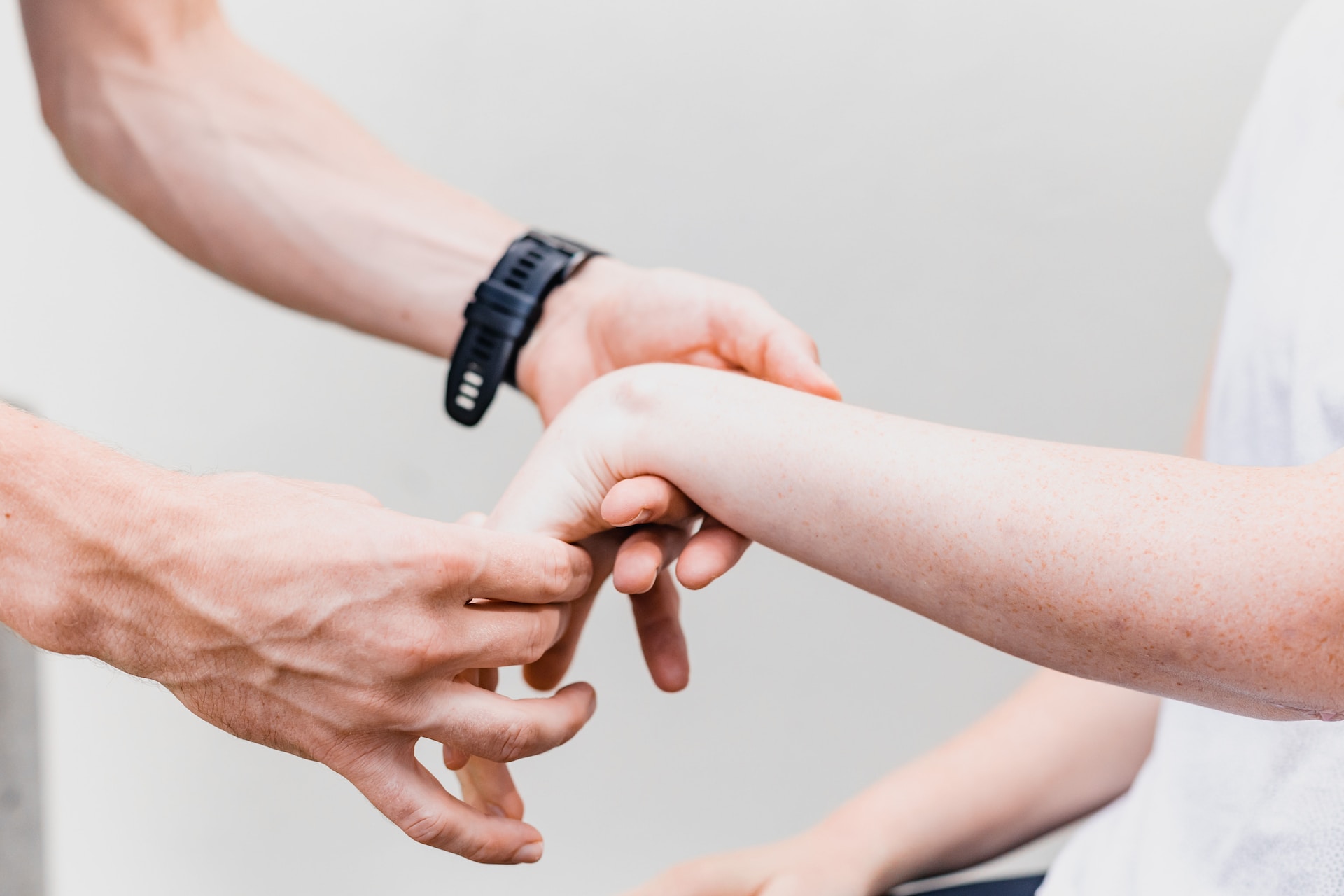
Palpation examination – It is an essential examination that a general practitioner can perform. Palpation examination![]() involves touching the affected structures with whole fingers, using weak, firm, and intense pressure. Pain manifests during palpation in the area of the lateral epicondyle and the wrist's extensor muscles.
involves touching the affected structures with whole fingers, using weak, firm, and intense pressure. Pain manifests during palpation in the area of the lateral epicondyle and the wrist's extensor muscles.
Muscle strength assessment test – To assess muscle strength, specialists often use a dynamometer![]() . It is a device suitable for measuring the value of the acting force according to Hooke's law, which states that the deformation of a given elastic element is proportional to the value of the force acting on it. Various types of dynamometers are used in medicine.
. It is a device suitable for measuring the value of the acting force according to Hooke's law, which states that the deformation of a given elastic element is proportional to the value of the force acting on it. Various types of dynamometers are used in medicine.
The Cozen Test – The test is suitable for demonstrating the presence of the golfer's elbow symptom. When doing the test, it is essential to position the wrist's long-term radial extensor muscle and the wrist's short radial extensor muscle in the correct position. Unique positioning of the patient's limb is done in the presence of a specialist. The test is positive if the patient develops pain in the medial humeral epicondyle or on the radial side of the extensor muscles of the forearm. However, the Cozen Test![]() is more commonly used to diagnose tennis elbow.
is more commonly used to diagnose tennis elbow.
Mill's Test – It is another physiotherapeutic test used for a golfer's elbow. The Mill's Test confirms the presence of elbow joint compartment pain syndrome, commonly known as golfer's elbow. It is designed to place the short radial extensor muscle of the wrist and the long-term radial extensor muscle of the wrist in maximum extension and provoke pain. However, the Mill's Test![]() is also more commonly used to diagnose tennis elbow.
is also more commonly used to diagnose tennis elbow.
Thomson Test – Another of the functional tests used to confirm or rule out the presence of a golfer's elbow. Thomson's test is provocative, which, by forcing the muscle tension of the tested group, can provoke pain in the lateral epicondyle or on the course of the wrist extensor muscles.
Ultrasound – Ultrasound of the elbow![]() allows non-invasive and painless assessment of the condition of the soft tissues of the joint, both in acute and chronic conditions. It makes it possible to make a proper diagnosis and quickly begin treatment. Ultrasound is an examination that will allow the doctor to assess the situation of muscles, ligaments, tendons, cartilage, synovial membrane, and bursae. It will also make clear the course of the median and radial latissimus nerves in the examined area.
allows non-invasive and painless assessment of the condition of the soft tissues of the joint, both in acute and chronic conditions. It makes it possible to make a proper diagnosis and quickly begin treatment. Ultrasound is an examination that will allow the doctor to assess the situation of muscles, ligaments, tendons, cartilage, synovial membrane, and bursae. It will also make clear the course of the median and radial latissimus nerves in the examined area.
X-ray – With its help, it is possible to make clear the osteoarticular system of a selected body area, such as the elbow joint. Indications for X-ray![]() are mainly pain in the elbow, increasing swelling, and redness of this anatomical region. Pain in the elbow joint felt by the patient may also indicate degenerative or rheumatoid changes in this area.
are mainly pain in the elbow, increasing swelling, and redness of this anatomical region. Pain in the elbow joint felt by the patient may also indicate degenerative or rheumatoid changes in this area.
MRI – MRI exams![]() , while valuable, do have limitations. They may not provide sufficient accuracy in determining the underlying cause of an ailment. In such cases, an ultrasound or X-ray can be complemented by a more precise CT scan specifically targeting the elbow joint. By utilizing an elbow MRI, doctors are able to visualize both the bones and the soft tissues surrounding the joint, including ligaments, bursae, capsules, and articular cartilage. It also shows benign and malignant neoplastic lesions, allows you to distinguish one from the other and accurately localize them, and assesses the level of possible involvement of adjacent structures.
, while valuable, do have limitations. They may not provide sufficient accuracy in determining the underlying cause of an ailment. In such cases, an ultrasound or X-ray can be complemented by a more precise CT scan specifically targeting the elbow joint. By utilizing an elbow MRI, doctors are able to visualize both the bones and the soft tissues surrounding the joint, including ligaments, bursae, capsules, and articular cartilage. It also shows benign and malignant neoplastic lesions, allows you to distinguish one from the other and accurately localize them, and assesses the level of possible involvement of adjacent structures.
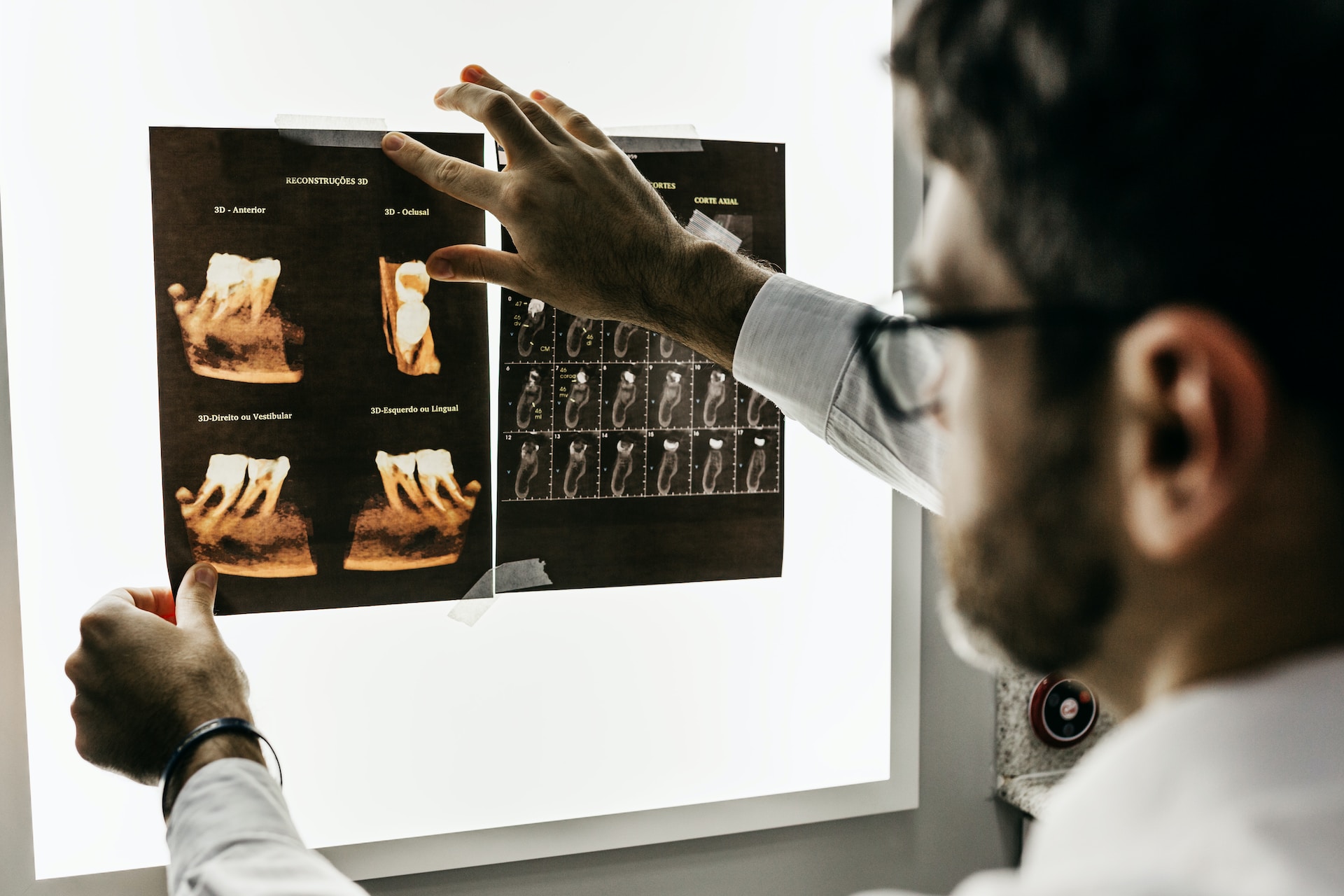
The treatment choice may differ depending on the severity of the case. Mild cases of golfer's elbow will do without unique treatments, such as surgery, which is sometimes necessary in severe cases. The basis of therapy, on the other hand, is to avoid strains that lead to pain. In addition to it, the following treatments for golfer's elbow are distinguished:

Symptomatic treatment – Treatment for symptoms typically involves a combination of painkillers, anti-inflammatory medications![]() , and cold compresses. Resting the affected limb and relieving pressure on it with the use of an orthosis may also be recommended. If conservative measures prove inadequate, patients may be referred for physiotherapy.
, and cold compresses. Resting the affected limb and relieving pressure on it with the use of an orthosis may also be recommended. If conservative measures prove inadequate, patients may be referred for physiotherapy.
Manual therapy – Manual therapy is a straightforward type of physiotherapy that focuses on stretching muscles and joints. During this treatment, a specialist applies various techniques to the shoulder and thoracic spine to address any muscle imbalances and promote better function in the elbow.
TECAR therapy – It is one method of physiotherapy. If a golfer's elbow is diagnosed, physiotherapy is one of the critical elements of treatment. TECAR therapy![]() uses the positive effects of high-frequency radio waves on the affected cells. By delivering a high dose of energy to the tissues, the treatment improves circulation drainage and oxygenates the tissues, which speeds up recovery.
uses the positive effects of high-frequency radio waves on the affected cells. By delivering a high dose of energy to the tissues, the treatment improves circulation drainage and oxygenates the tissues, which speeds up recovery.
Shock wave therapy – It is another physiotherapeutic method. Shock wave therapy![]() is one of the most efficient treatments for many injuries, with many applications. Physiotherapy for golfer's elbow using the Rosetta ESWT device makes it possible to relieve lasting pain. Shockwave treatment stimulates microcirculation and, with it, cellular metabolism. Thus, damaged tissues regenerate faster, and pain ceases to bother the patient.
is one of the most efficient treatments for many injuries, with many applications. Physiotherapy for golfer's elbow using the Rosetta ESWT device makes it possible to relieve lasting pain. Shockwave treatment stimulates microcirculation and, with it, cellular metabolism. Thus, damaged tissues regenerate faster, and pain ceases to bother the patient.
High-energy laser therapy – Yet another different physiotherapy method is high-energy laser therapy![]() . This method is an excellent complement to other physiotherapy methods. The high-energy laser is a helpful tool for reducing muscle tension and targeting trigger points. By relieving pain, it promotes better blood supply to the tissues and speeds up cell recovery.
. This method is an excellent complement to other physiotherapy methods. The high-energy laser is a helpful tool for reducing muscle tension and targeting trigger points. By relieving pain, it promotes better blood supply to the tissues and speeds up cell recovery.
Ionophereisis – It is a physical therapy procedure using direct current, using which drugs with various effects can be introduced into the body, including, among others, anti-rheumatic, anti-inflammatory, analgesic, softening scar tissue, dilating blood vessels, and accelerating wound healing. Iontophoresis is a treatment with a wide range of applications. It is used in the case of, among others, arthritis or other degeneration of the musculoskeletal system.
Magnet therapy – Magnet therapy![]() is a widely utilized physical therapy method that harnesses the therapeutic properties of magnetic fields. These fields penetrate deep into affected tissues, stimulating regeneration and providing relief from pain, inflammation, swelling, and promoting faster healing. Magnetotherapy employs a device called a magnetron for administering these magnetic field treatments.
is a widely utilized physical therapy method that harnesses the therapeutic properties of magnetic fields. These fields penetrate deep into affected tissues, stimulating regeneration and providing relief from pain, inflammation, swelling, and promoting faster healing. Magnetotherapy employs a device called a magnetron for administering these magnetic field treatments.
Kinesiotaping – It is a pain-relieving therapeutic method that involves taping![]() various body areas with special elastic tapes. A combination of muscle and ligament techniques is usually used. It helps relieve pain and pressure on the structures burdened by pathological changes. The recordings are put on for several days.
various body areas with special elastic tapes. A combination of muscle and ligament techniques is usually used. It helps relieve pain and pressure on the structures burdened by pathological changes. The recordings are put on for several days.
Transverse massage – Massages![]() can help treat a golfer's elbow. Transverse massage involves working laterally against muscle or ligament fibers. The technique is punctual – doing it only at the site of the condition on the relaxed muscle belly and in the case of tendons and ligaments on the tightened structure. During the procedure, the tension in the tissue is decreased, which helps improve the arrangement of muscle and collagen fibers. This creates a warming effect at the site of the disorder, promoting better blood circulation overall.
can help treat a golfer's elbow. Transverse massage involves working laterally against muscle or ligament fibers. The technique is punctual – doing it only at the site of the condition on the relaxed muscle belly and in the case of tendons and ligaments on the tightened structure. During the procedure, the tension in the tissue is decreased, which helps improve the arrangement of muscle and collagen fibers. This creates a warming effect at the site of the disorder, promoting better blood circulation overall.
Pharmacotherapy – To treat golfer's elbow pain, medication may be necessary. Non-steroidal anti-inflammatory drugs![]() (NSAIDs) can help reduce inflammation and promote tissue healing. In cases of chronic inflammation, a corticosteroid injection
(NSAIDs) can help reduce inflammation and promote tissue healing. In cases of chronic inflammation, a corticosteroid injection![]() or block may be administered. Corticosteroids are a type of medication with properties that help reduce inflammation, allergies, and suppress the immune system. They can be taken orally, inhaled, applied to the skin, or given through an injection into a vein or muscle.
or block may be administered. Corticosteroids are a type of medication with properties that help reduce inflammation, allergies, and suppress the immune system. They can be taken orally, inhaled, applied to the skin, or given through an injection into a vein or muscle.
Surgical treatment – When physiotherapy is unsuccessful, surgical treatment![]() for a golfer's elbow may be necessary. This treatment method may be opted for after several months of trying treatment without the desired results. Operative treatment of the golfer's elbow uses various methods tailored to the case and the patient's needs. Most elbow procedures are based on the process, according to Nirschl. During surgery, the skin over the medial epicondyle is incised, and hypertrophied and damaged tissues and bony outgrowths are removed. The area around the epicondyle is drilled several times to improve blood supply and speed up the repair process.
for a golfer's elbow may be necessary. This treatment method may be opted for after several months of trying treatment without the desired results. Operative treatment of the golfer's elbow uses various methods tailored to the case and the patient's needs. Most elbow procedures are based on the process, according to Nirschl. During surgery, the skin over the medial epicondyle is incised, and hypertrophied and damaged tissues and bony outgrowths are removed. The area around the epicondyle is drilled several times to improve blood supply and speed up the repair process.
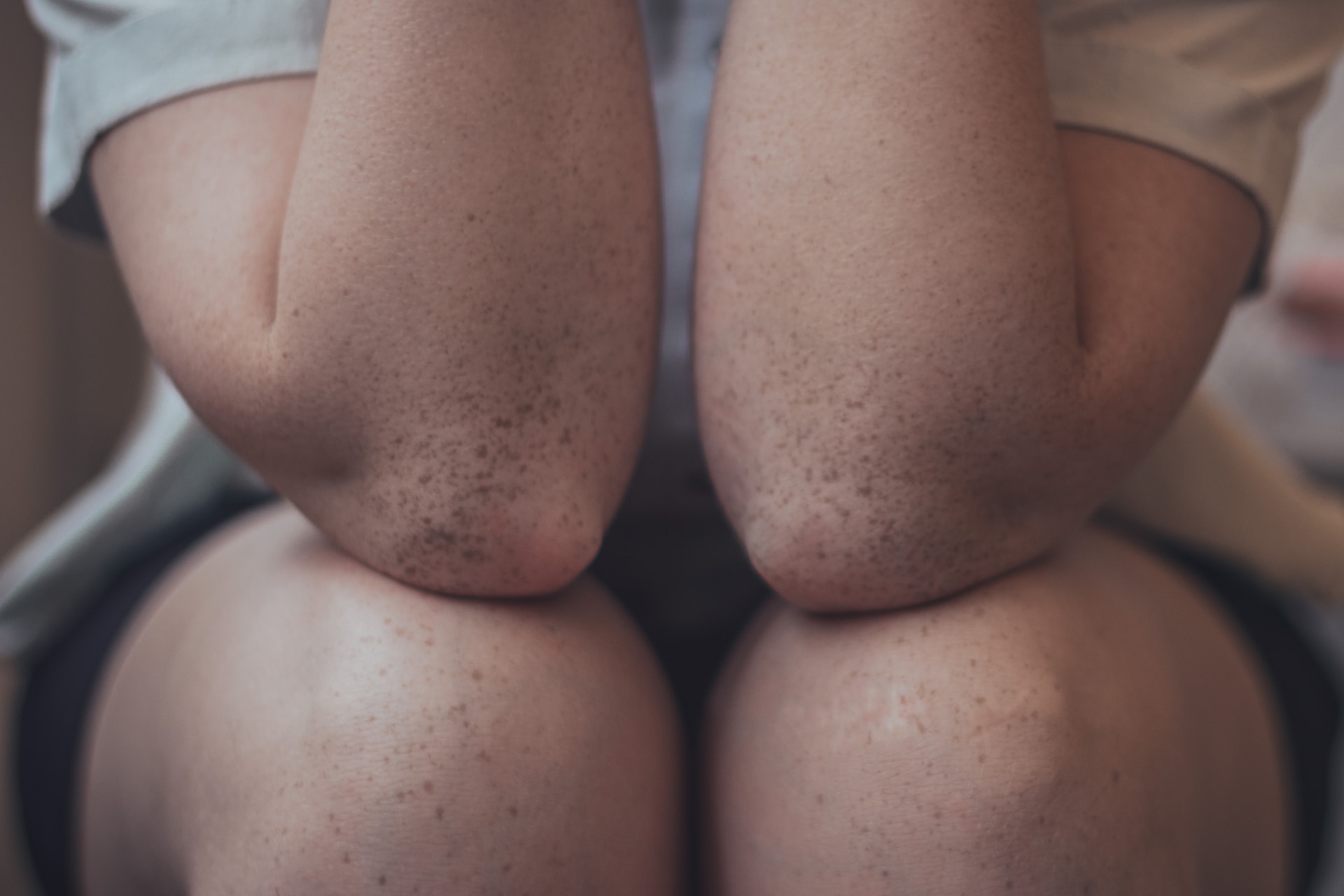
Surgical treatment yields satisfactory results in both non-surgical and in cases of more advanced lesions. For athletes, a comeback to physical activity with conservative treatment occurs with a gradual increase in load as long as the exercises do not cause pain. After surgery, a comeback to sports occurs after about four months.
In some cases, symptoms may resolve spontaneously without treatment. Then, however, the process can take up to 1.5 years. Sometimes, it is necessary to change lifestyle, activity, or sports. These changes are aimed at preventing a recurrence of the injury.
In people who play sports, adjustments may need to be made in golf swinging, ball throwing techniques, or doing swings. In severe cases of golfer's elbow, it may be necessary to temporarily halt work or sports activities if they worsen the condition or cause a re-injury.
To avoid the onset of golfer's elbow and continue enjoying your favorite sport, it is essential to properly warm up before any physical activity, engage in forearm muscle exercises like squeezing a ball, and ensure that your technique is correct. Reducing the amount of elbow-straining activities and work and guaranteeing optimal mobility of the upper limb joints and spine will reduce the likelihood of recurrence of symptoms.

Why is warming up before training thus important? It is an essential element that many people neglect or forget about. Properly warming up before a workout reduces the chances of sustaining injuries![]() and helps prevent excessive pain or soreness afterward. It enhances the flexibility and effectiveness of muscles and tendons.
and helps prevent excessive pain or soreness afterward. It enhances the flexibility and effectiveness of muscles and tendons.
Besides, it increases the range of motion, improves oxygenation of the body, activates the nervous system, raises body temperature, and stimulates the cardiovascular system. A warm-up prepares the body for intense exercise and increases the effectiveness of the activities performed in the actual training.
Using braces and elbow orthoses![]() to help relieve pressure on the flexors can be helpful. When you purchase these supplies from a medical store, you will receive detailed instructions on using them. An elbow brace is a type of specialized medical equipment used to provide support, protection, and stability to an injured or strained elbow joint. Its main purpose is to safeguard the affected area and prevent further damage. In some cases, elbow orthoses are also used for protective and preventative purposes to avoid recurring injuries or known risks.
to help relieve pressure on the flexors can be helpful. When you purchase these supplies from a medical store, you will receive detailed instructions on using them. An elbow brace is a type of specialized medical equipment used to provide support, protection, and stability to an injured or strained elbow joint. Its main purpose is to safeguard the affected area and prevent further damage. In some cases, elbow orthoses are also used for protective and preventative purposes to avoid recurring injuries or known risks.
People in the risk group for golfer's elbow include:

Athletes – Golfers' elbow often affects athletes in sports that require repetitive arm movement. Inflammation of the medial epicondyle is inevitably associated with pain on the inner side of the elbow. It most often affects people who subject the area to repetitive movements that lead to joint overloading. Sports predisposed to such ailments include golf, American soccer, rugby, archery, javelin throwing, ball thrusting, discus throwing, or weightlifting.
Children – Golfers' elbow is an affliction that often affects children. The immature musculoskeletal system plays a leading role in developing injuries in children and adolescents. The different anatomical structures physiological and biological-mechanical properties of the musculoskeletal system of children are more pronounced the younger the child is. In children who play sports, weak muscles of the shoulder girdle and elbow are a contributing factor to the occurrence of golfer's elbow.
Physical workers – Several occupations are also at high risk for this type of injury and trauma. Elbow inflammation can occur among carpenters, construction workers, grinders, gardeners, or plumbers. Frequent flexing and straightening of the elbow can result in a golfer's elbow in activities such as painting, cooking, chopping wood, raking, or hitting with a hammer.
RephraseThe elbow is a complex structure with numerous muscles serving different purposes. However, it is particularly prone to overuse injuries, which can lead to inflammation and other problems. Tennis elbow and golfer's elbow are two common conditions classified as muscle enthesopathies. They share similar symptoms, making them easy to confuse.
In the case of tennis elbow, the issue affects the wrist extensor muscles![]() and the most identifiable symptom is pain on the outer side of the elbow joint. In contrast, golfer's elbow affects the flexor muscles and is less common than tennis elbow. With golfer's elbow, the pain is experienced on the inner side of the elbow.
and the most identifiable symptom is pain on the outer side of the elbow joint. In contrast, golfer's elbow affects the flexor muscles and is less common than tennis elbow. With golfer's elbow, the pain is experienced on the inner side of the elbow.
To summarize, tennis elbow and golfer's elbow differ in terms of the specific area they affect. Tennis elbow impacts the extensor muscles of the wrist, whereas golfer's elbow affects the flexor muscles. Additionally, pain is experienced in different areas – on the outside for tennis elbow and on the inside for golfer's elbow.
Golfer's elbow is a common condition that can affect athletes and individuals performing repetitive activities or heavy lifting. It is characterized by pain in the soft tissues located on the inner side of the elbow, specifically at the medial epicondyle of the humerus. The discomfort arises from strain on the tendon attachments to the bone, leading to degeneration.
Golfer's elbow typically begins with severe pain in the elbow region, and as the condition progresses, other symptoms may develop. Overload injuries and muscle attachment damage are usually responsible for these symptoms. Diagnosing golfer's elbow involves taking a detailed medical history and conducting a comprehensive clinical examination.
Medical professionals will inquire about forearm pain and potential causes before considering additional specialized tests for diagnostic clarification when necessary. Options for treatment vary depending on the seriousness of each case. Mild cases typically do not require particular interventions such as surgery; instead, avoiding activities that provoke pain forms a fundamental part of management.
Both non-surgical and surgical treatments have shown satisfactory results for more advanced cases. To prevent golfer's elbow from interfering with your favorite sport or other physical activities, it is crucial to warm up adequately beforehand and exercise your forearm muscles through activities like squeezing a ball.
In addition, it is important to ensure proper technique during physical activity, minimize movements and workloads that put excessive strain on the body, and optimize mobility in the joints of the upper limbs and spine. These measures all help reduce the likelihood of symptoms recurring.
Table of Contents
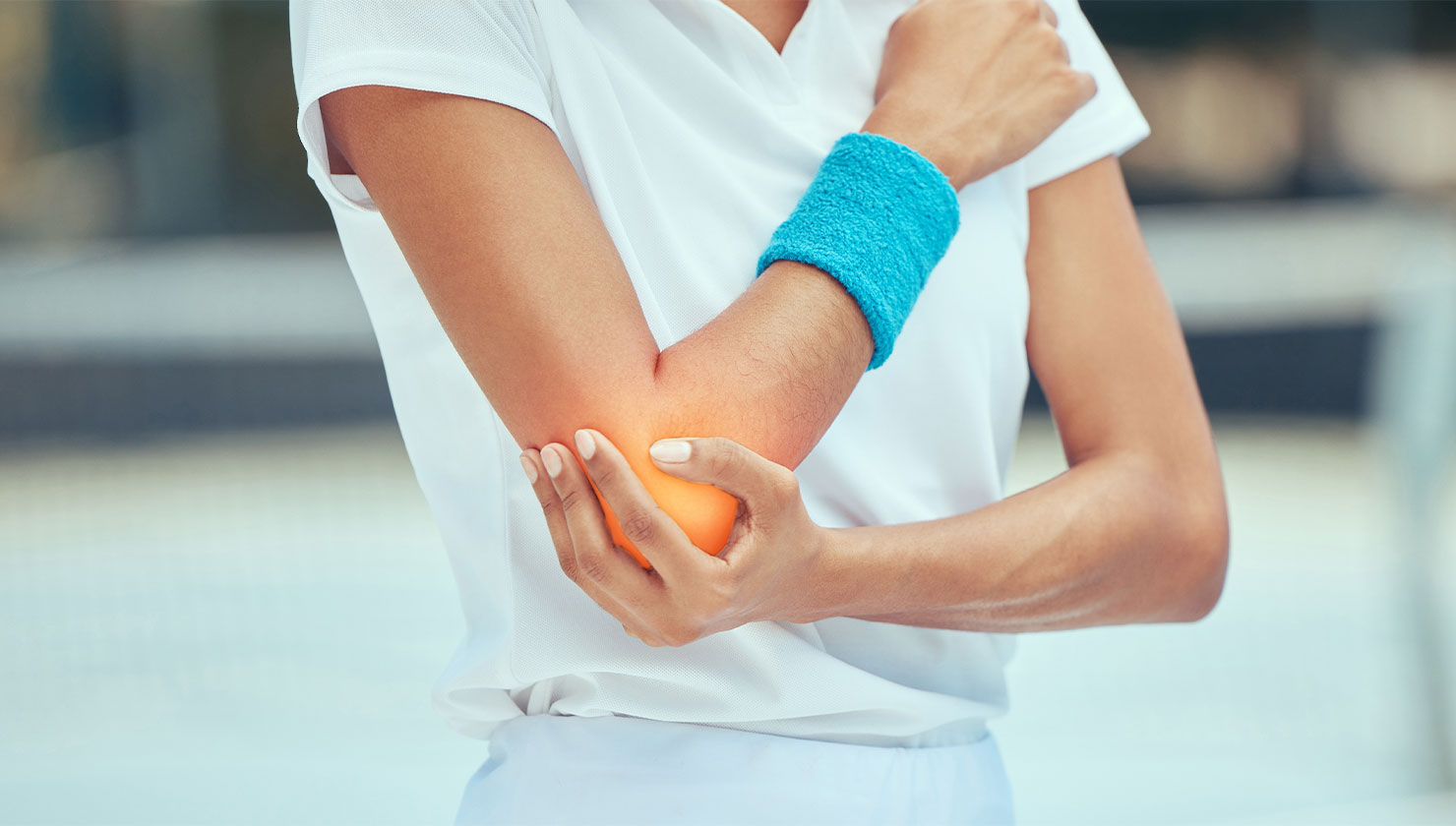
Tennis elbow is a syndrome of the lateral epicondyle of the humerus. It is characterized by pain in the elbow… read more »
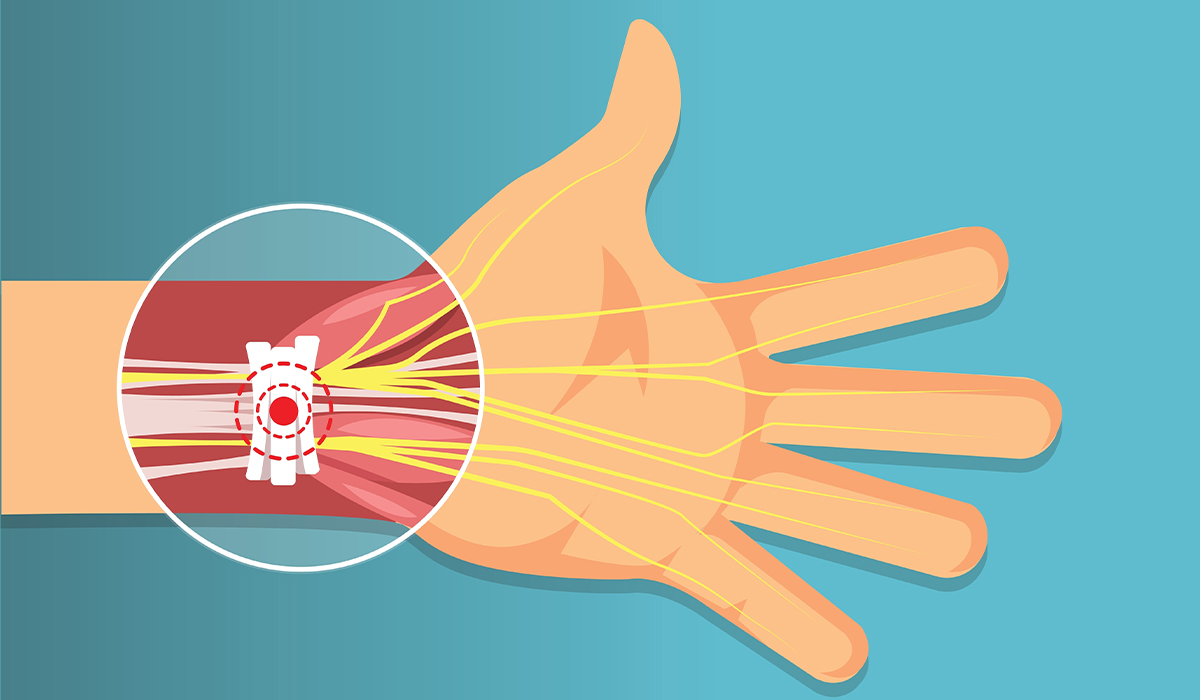
Carpal tunnel syndrome emerges when the wrist and hand are strained due to constriction of the median nerve in the carpal tunnel.… read more »
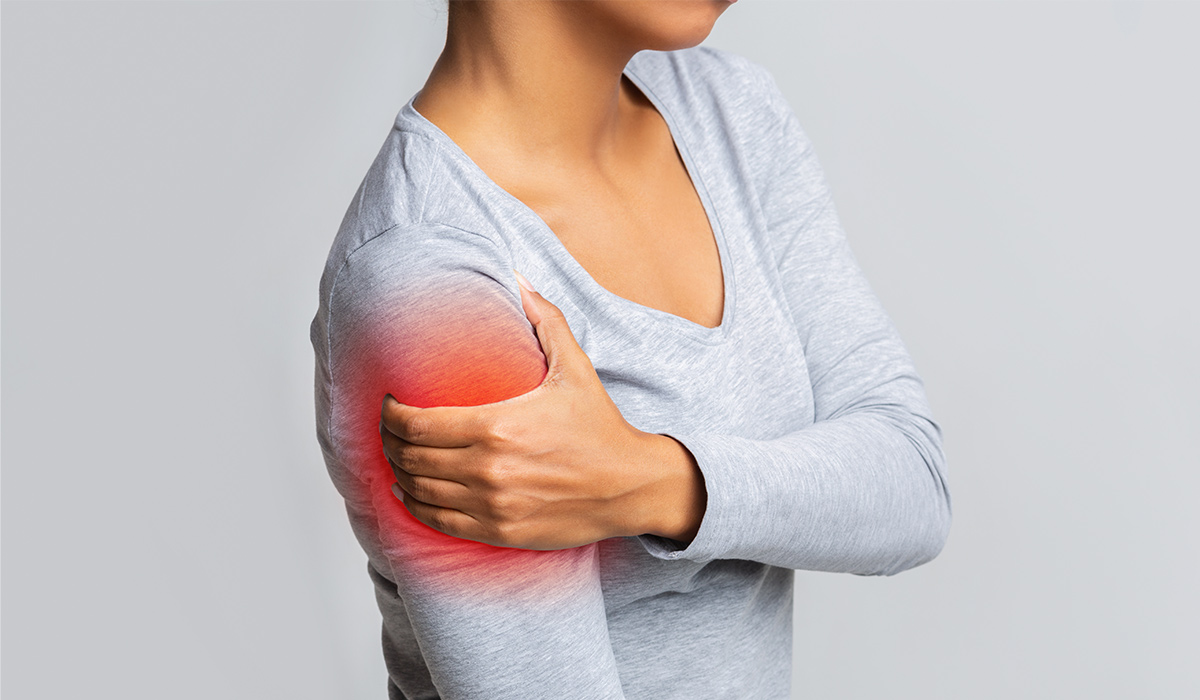
There are many factors to consider while trying to find the reason for the right arm and shoulder pain. Even… read more »
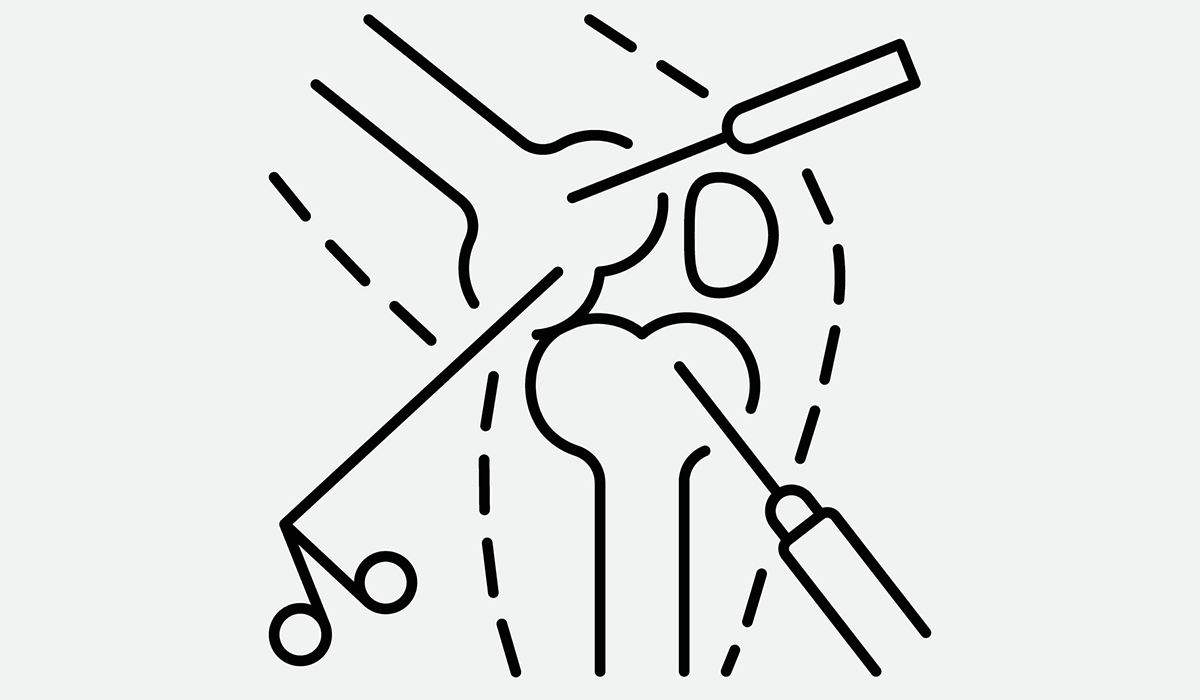
Arthroscopy is a minimally invasive surgical procedure used to diagnose and treat joint problems. When is it done? What to… read more »
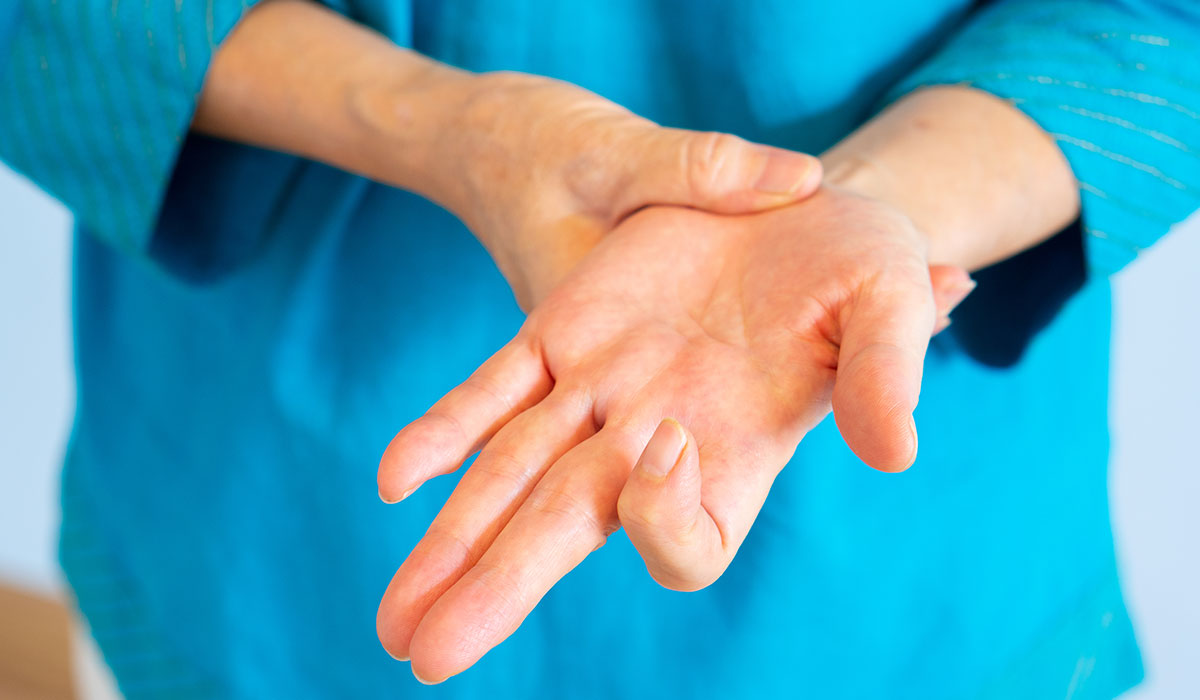
Trigger finger is a condition that impairs daily functioning. The effectiveness of treatment depends on the severity of the symptoms.… read more »
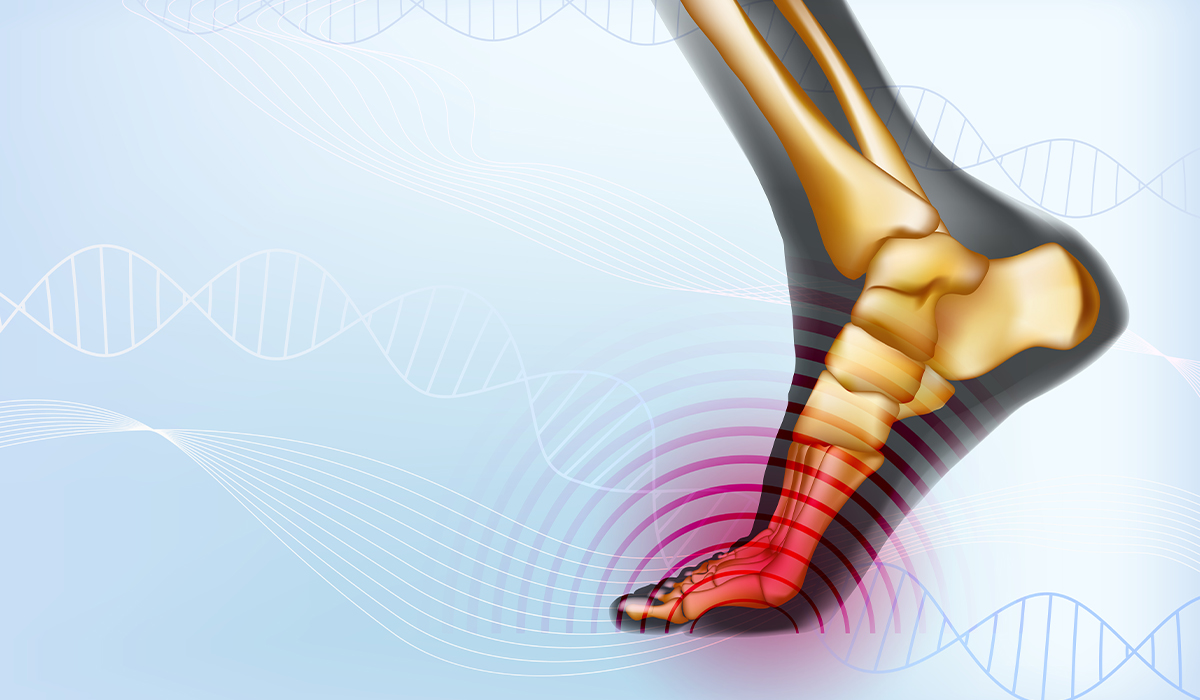
Turf toe is an injury of the main joint in the big toe. It usually occurs when a person bend… read more »
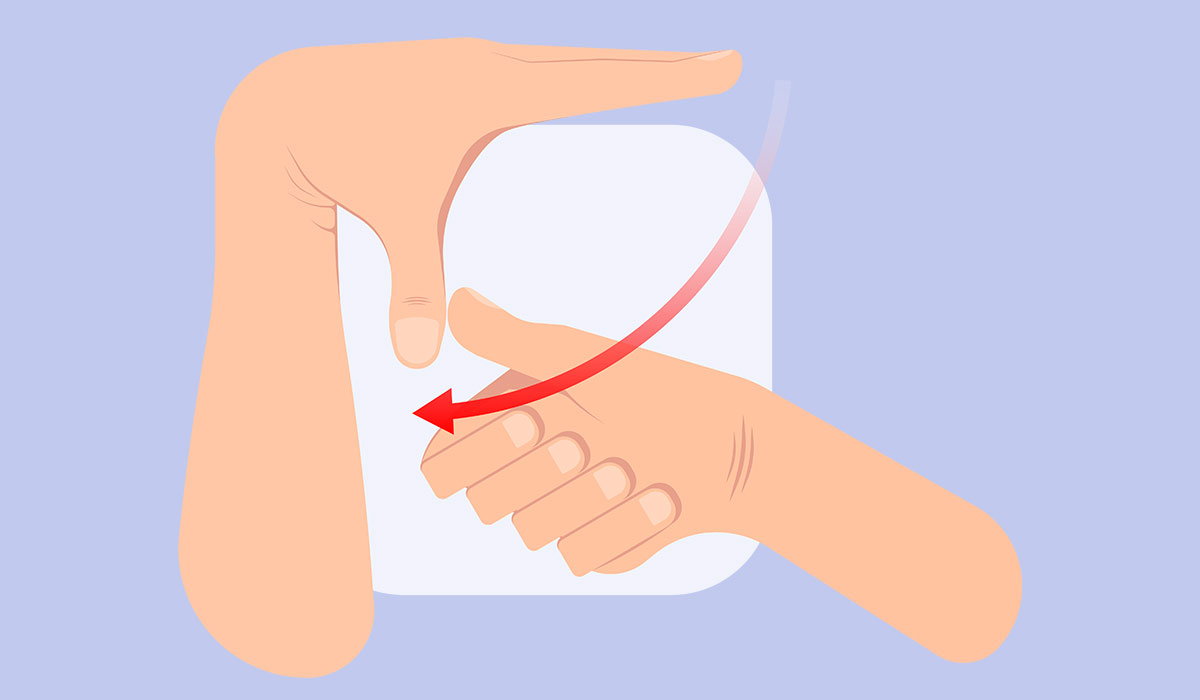
Ehlers-Danlos Syndrome is a group of diseases with a genetic basis. Learn all the symptoms associated with EDS. Find out… read more »
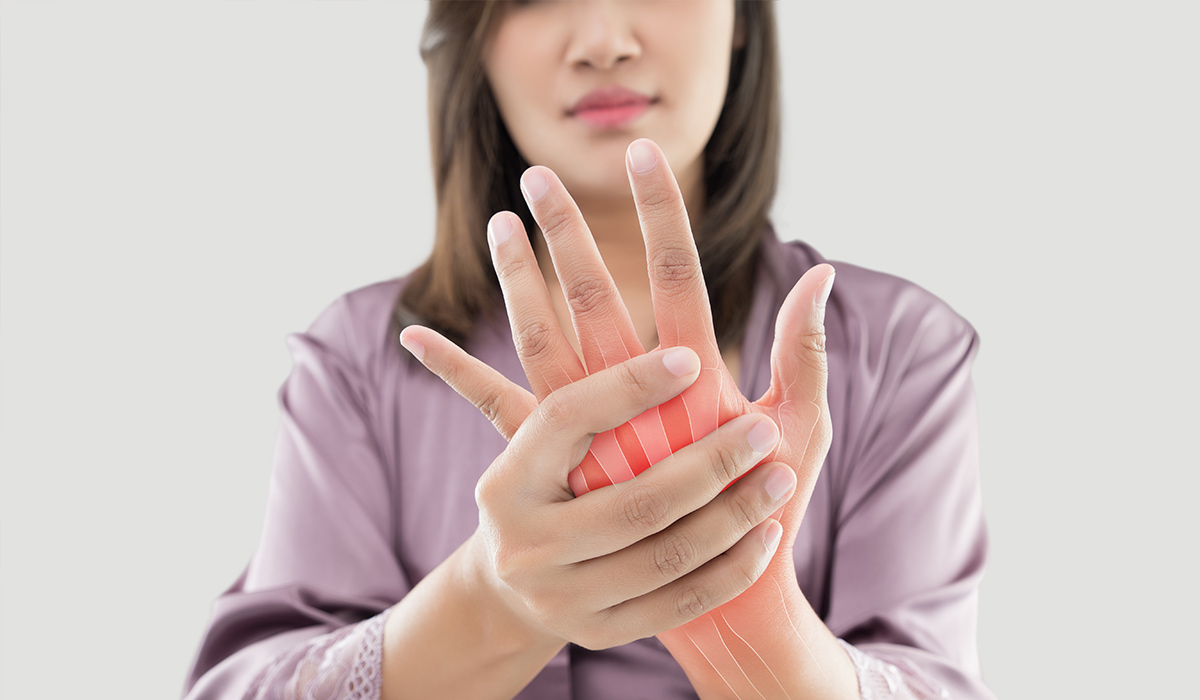
Muscle pain and stiffness – these can be the first symptoms of arthritis. Learn about the most common types of… read more »
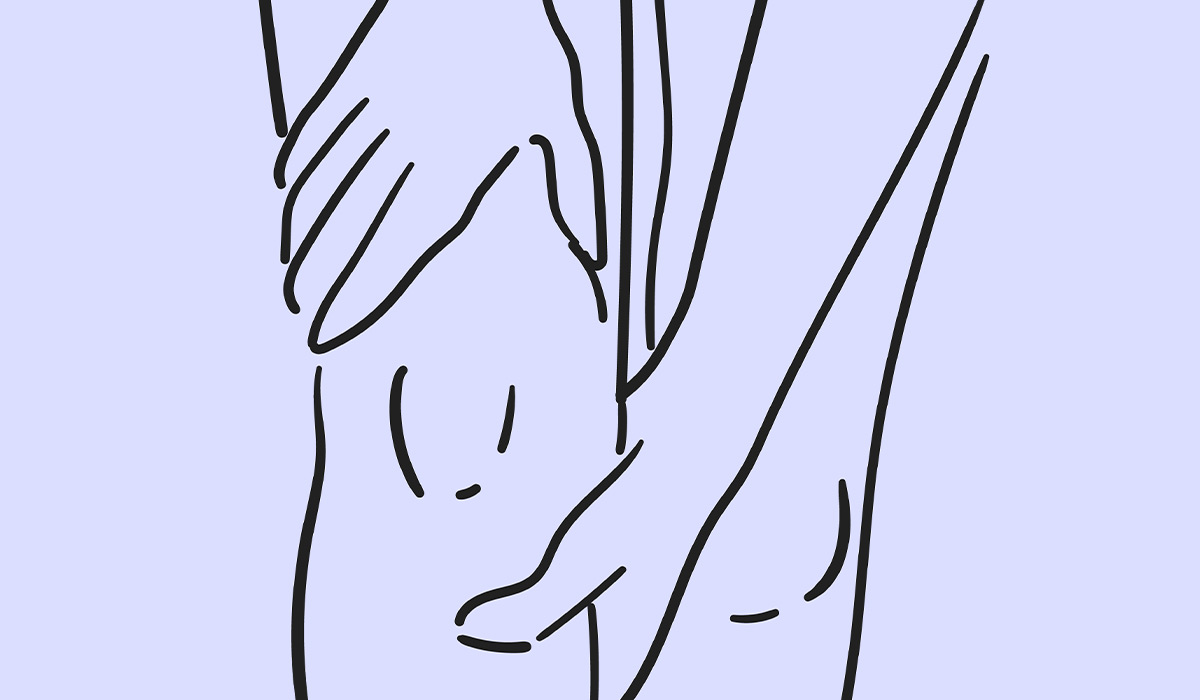
It is a common concept that the knee is one of the most complex parts of the human body. The… read more »